 "Berang" (berang)
"Berang" (berang)
08/14/2015 at 04:27 ē Filed to: british mini, morris mini minor, lloyd, dkw, saab, suzuki, suzulight 360
 8
8
 41
41
 "Berang" (berang)
"Berang" (berang)
08/14/2015 at 04:27 ē Filed to: british mini, morris mini minor, lloyd, dkw, saab, suzuki, suzulight 360 |  8 8
|  41 41 |
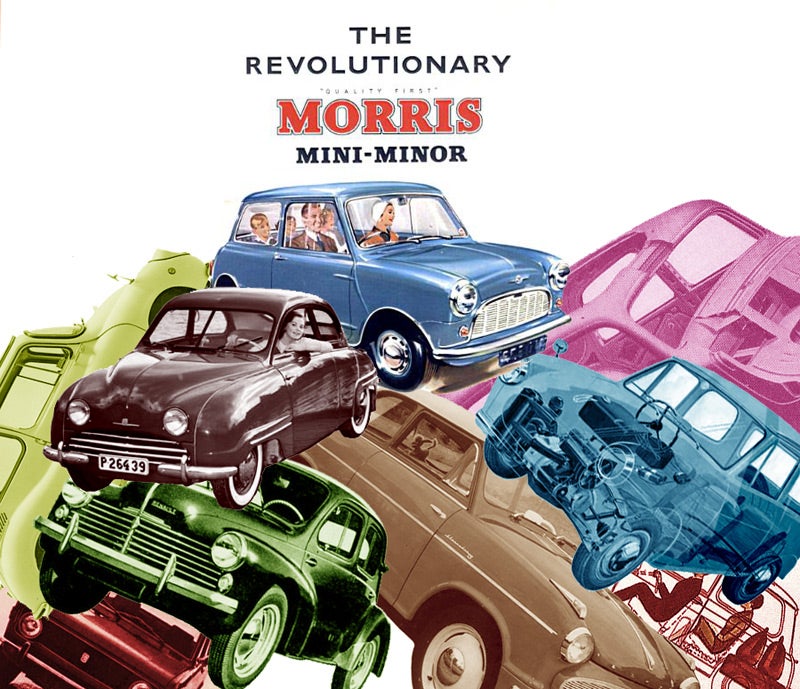
When the Morris Mini Minor comes up in automotive histories - it is usually described as revolutionary - a template for all cars that came after it. But itís hardly true. In fact in many ways the Mini was a dead end, and it became a living fossil within its own production life.
Hereís the truth: Little if anything was revolutionary, let alone original about the Morris Mini Minor (well excepting the rubber suspension anyway). To be sure the design was creative and brilliant - and it worked
really well
. The problem is that since 1959 the Mini has been repeatedly praised for introducing all sorts of technology to the automotive world that actually appeared on other cars previously. Letís start with a basic and oft-repeated misattribution:
The Mini was the first car with a transverse engine and front wheel drive!
Itís weird that this is so often repeated when it is so obviously false. Lots of cars had transverse engines
and
front wheel drive before the Mini. In fact - some of the very first self propelled vehicles ever made did.
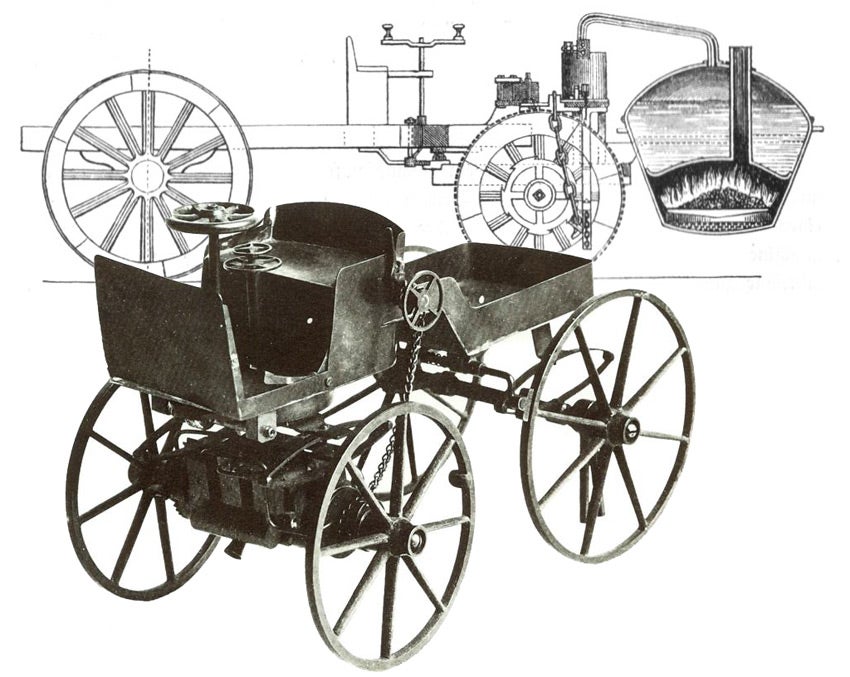
One might argue that Nicholas Joseph Cugnot invented the layout when he built his transverse engined, front wheel driven steam tractor in 1769. And later George B. Selden - yes
that Selden
invented and patented a front wheel drive, gasoline powered horseless buggy in 1895. Which he then used to troll all other early American automobile companies - but I digress.
!!! UNKNOWN CONTENT TYPE !!!
The point is that the Mini didnít introduce the worldís first front-driver with a transverse engine in 1959. In fact Issigonis was about two centuries late to that party. Of course Cugnotís tractor and Seldenís patent buggy were not appreciated in their own time, and frankly were far too ahead of existing technology in concept to be useful machines. The chief drawback to the development of a workable front wheel drive car was developing axles that could transfer power to the front wheels - even as those wheels went over bumps and turned around corners. Seldenís buggy had a solid front axle and the whole engine turned with it to corner. Primitive and unsatisfactory.
So when did that happen? A lot sooner than 1959. Cord and Ruxton had produced front wheel drive cars in 1929 that used cardan joints in the drive axles. But these had the engine mounted longitudinally. Then in 1931 DKW came out with the F1 - which had front wheel drive through jointed axles - and - a transverse engine. These early DKWs were however rather simple cars, and the engine, though transverse was mounted behind the transmission unlike in any modern car. And beside that, the Mini was the first car with front wheel drive and unitbody construction, yes? No. The CitroŽn Traction Avant was already there. Then the Mini was the first car with a transverse engine, front wheel drive, and unitbody construction right?
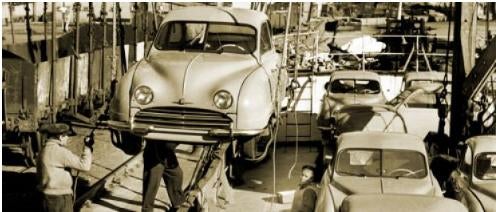
No. The SAAB 92 beat the Mini to that punch. By ten years. Additionally, the 92 had its transverse engine mounted side by side with the gearbox, like nearly all front wheel drive cars made today. And unlike the Mini which had its gearbox mounted directly beneath the engine - in the oil sump. So why doesnít SAAB get the glory? Probably because they ditched transverse engines with their next design, the 93. It is sort of pointless to market an innovation you dumped in favor of something else.
Well what about the little things? Those brilliant ideas that made the Mini so smart, like using sliding windows instead of windows that lowered down into the doors - giving more elbow room and space to store things inside of the door itself? Thatís really a pretty cool trick, but alas it did not originate with the Mini. The Renault 4cv was there before, and so was the Japanese made Subaru 360. Do you know what else the Subaru 360 had in 1958 that the mini came out with in 1959? 10 inch wheels at each corner. Earlier microcars had already been using even smaller 8Ē wheels, but since the Miniís 10 inchers are often remarked on as an example of the revolutionary packaging of the Mini, I felt it should be pointed out that here too the Mini was just making the best of somebody elseís innovation.
When I was in the 3rd grade my school library had a very outdated book about cars that claimed the Mini had inspired two-box design and the hatchback craze. Despite the odd fact that the Mini was not actually a hatchback. But another very odd car introduced in 1959 did have a third door, albeit hinged at the side. I think if youíve seen the mini and have never before seen a 1959 Suzuki Suzulight you may find the following illustration from a sales brochure very interesting.
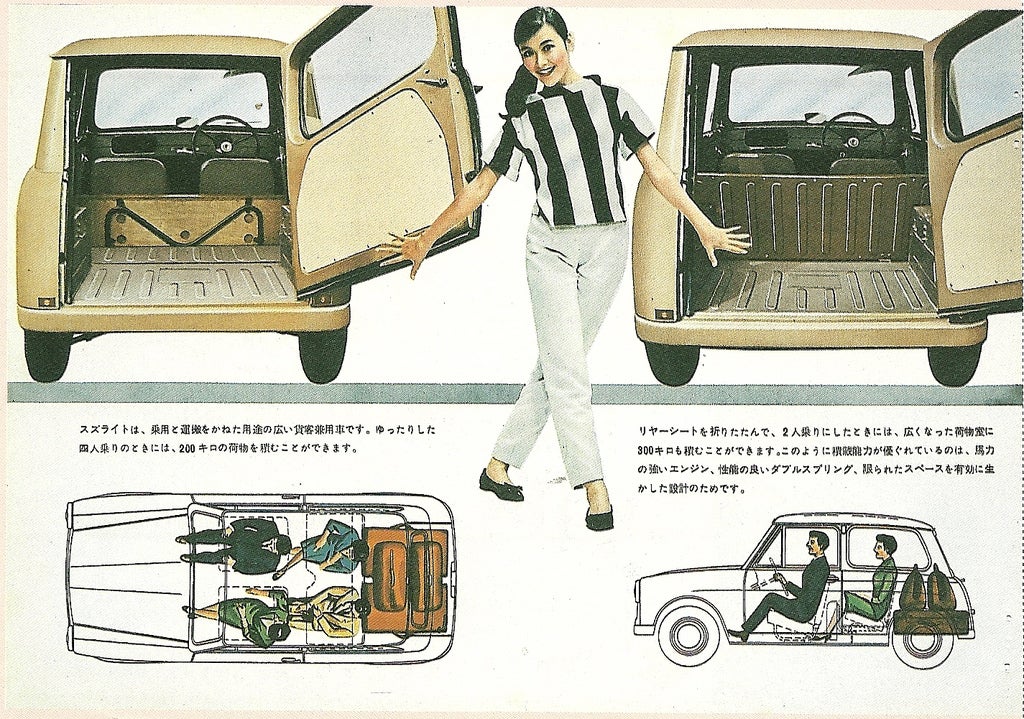
Well, so much for the Mini being the first with two-box design and inspiring the development of hatchback cars. Interestingly the Suzulight 360 was launched in October 1959, only a few months after the Morris Mini Minor appeared in August of that year. Could the Suzuki be some sort of miraculously swift imitation? No. The Suzulight line had already been in production since 1955, before the Mini was even a twinkle in Issigonis eye. The Suzulight had been developed from the German Lloyd; Yet another front-driver with a transverse engine that predates the Mini. The Lloyds had a nearly-two-box design featuring a truncated trunk, which also appeared on some models of the Suzulight.
But hereís the thing, the Mini, the Lloyd, the Suzulight, DKW, SAAB, et al. are all very unlike modern front wheel drive cars in a lot of ways. But if you discount the lack of overhead camshafts, or any valves at all, or the lack of coil springs, struts, etc. Youíre left with one very minor, but very important difference. All of these cars despite their front wheel drive, transverse engines, brilliant packaging and construction, lack this: unequal length driveshafts. Seems like a pretty stupid detail to get hung up on right? But itís actually very important, because nearly every front wheel drive car has unequal length drive shafts. Figuring out how to make unequal length drive shafts work in a car was a huge problem that Issigonis and others simply sidestepped. In the SAAB and others, the short two cylinder engine allowed the differential to be in the center of the carís width so equal length driveshafts could be used. When the people setting the engine next to the gearbox decided they wanted to use more than two cylinders in their engine, they found the longer engines pushed the gear box and differential over towards one side of the car. This meant the drive shafts to the wheels had to be different lengths.
The problem was that using a long axle on one side of the car, and a short axle on the other side produced what could honestly be described as ďfunnyĒ handling. The cars wouldnít steer properly or predictably. So most companies either stuck with two cylinders, or changed to longitudinally located engines to maintain equal drive shaft lengths. Issigonis came up with his answer which was to put the gearbox directly under the engine. But while this resulted in fine handling, it had drawbacks of its own. The engine and gearbox sharing oil was not ideal, and it made for a very tall power unit.
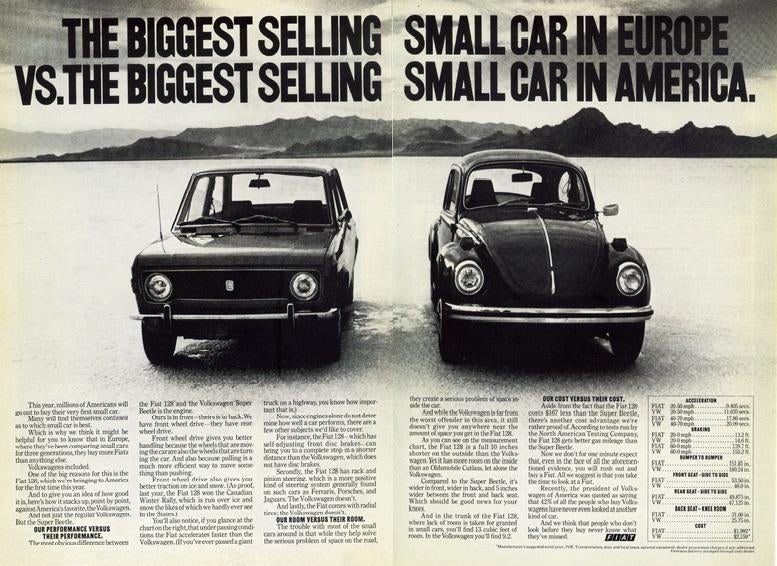
As it turns out the people over at Fiat took a hard look at what made front wheel drive cars handle funny, and came out with two truly revolutionary cars. The Autobianchi Primula and the Fiat 128. These cars sat the engine and gearbox side by side as in modern front drivers - and they used unequal length drive shafts that were carefully engineered to eliminate torque steer. Well most of it anyway. The 128 also had a modern, non rubber based suspension, and an engine with an overhead camshaft. As well, three box body styles have come back into favor and hatchbacks are not as popular as they used to be a decade or so ago. So as it turns out the Mini wasnít really the car that set the pattern for modern cars. The simple truth is there are more cars today with more design in common with the Fiat 128 than with the Mini. Indeed in a very basic sense more cars resemble the layout of even the Suzulight than the Mini.
All that being said, the Mini is still an amazing, brilliant design and one of the best cars ever. It combined some of the best ideas in motoring of the era into one smart package. Even if it didnít directly set the pattern for modern cars, it at least inspired a lot of drivers, and proved small cars can be loads of fun to drive. Also, Mr. Bean never owned a Fiat.
!!! UNKNOWN CONTENT TYPE !!!
Image credits: Collages created by the author.
!!!error: Indecipherable SUB-paragraph formatting!!!
courtesy of wikipedia commons.
!!!error: Indecipherable SUB-paragraph formatting!!!
courtesy of flickr user John Lloyd.
 ADabOfOppo; Gone Plaid (Instructables Can Be Confusable)
> Berang
ADabOfOppo; Gone Plaid (Instructables Can Be Confusable)
> Berang
08/14/2015 at 04:46 |
|
5,387,862
You may call that many cars produced not revolutionary. I disagree.
 Berang
> ADabOfOppo; Gone Plaid (Instructables Can Be Confusable)
Berang
> ADabOfOppo; Gone Plaid (Instructables Can Be Confusable)
08/14/2015 at 04:51 |
|
VW made over 20 million beetles. How many cars today are built like the beetle? A car can be a successful design, and popular - without being influential on later cars. For the most part the Mini just took other peopleís ideas and combined them. Thatís clever and smart, but not exactly revolutionary. And people commonly criticize the beetle, 2cv, fiat 500, etc. So why should the mini be off limits.
 duurtlang
> ADabOfOppo; Gone Plaid (Instructables Can Be Confusable)
duurtlang
> ADabOfOppo; Gone Plaid (Instructables Can Be Confusable)
08/14/2015 at 04:52 |
|
It is revolutionary, but not as revolutionary as people say.
Also: over three quarters of a million produced, introduced in the early 1930s, FWD, unibody, available hatchback at the end of the 1930s.
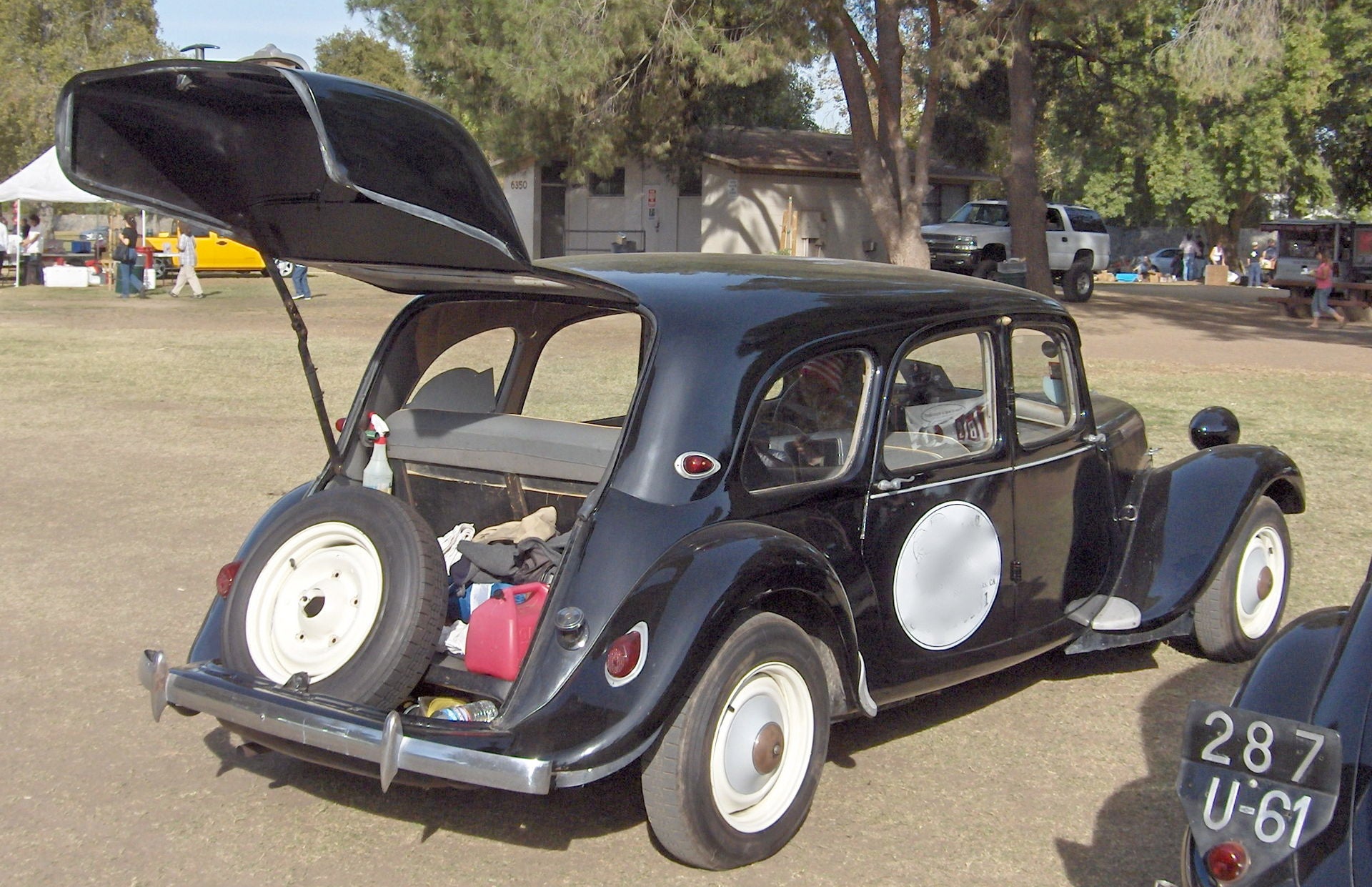
 Cť hť sin
> Berang
Cť hť sin
> Berang
08/14/2015 at 04:59 |
|
ďAs well, three box body styles have come back into favor and hatchbacks are not as popular as they used to be a decade or so ago.Ē
News to me. Depends where you are I suppose but I see several dozen Golfs for every Jetta, same with the Focus and so on.
 Svend
> Berang
Svend
> Berang
08/14/2015 at 05:01 |
|
The thing is revolutionary is often misused or misinterpreted for innovative. The Mini was revolutionary because it had a few innovations that were already used on other vehicles and caused a revolution in the car industry by how well it was accepted, adopted and sold. Letís say the Saab 92 sold 25,000 units, that isnít much of a revolution as much as civil unrest compared to the millions of Minis produced and sold around the world and continued production. It can also be seen as revolutionary in how it changed peopleís moods on cars, how they were used and the such varied type of customer from first world city individual to far flung third world organisation.
 TwinCharged - Is Now UK Opponaut
> Berang
TwinCharged - Is Now UK Opponaut
> Berang
08/14/2015 at 05:01 |
|
Personally, I believer hat whilst many of the Miniís design features were seen on cars before its existence, the Mini was the one who effectively combined them all together. And as we all know, a fortunate side effect of the Mini was that it drove brilliantly and could still carry four adult passengers and the minimum of their cargo with them.
 ADabOfOppo; Gone Plaid (Instructables Can Be Confusable)
> Berang
ADabOfOppo; Gone Plaid (Instructables Can Be Confusable)
> Berang
08/14/2015 at 05:07 |
|
Porsche still build Beetles.
Revolutionary does not have to be the very first at something. It can be merely the one that catches on.
The iPod was not the first digital music player. The iPhone was not the first Ďsmartí telephone device.
The Mini still influences car design today. There is of course the modern MINI, which needs to yell at us about being Ďsmallí. And there is also the efficient, space-saving packaging that still influences car design.
I am not saying youíre wrong, only that I disagree with your conclusions.
 Berang
> ADabOfOppo; Gone Plaid (Instructables Can Be Confusable)
Berang
> ADabOfOppo; Gone Plaid (Instructables Can Be Confusable)
08/14/2015 at 05:09 |
|
Except the mini doesnít really influence any cars today. Even the new ďminiĒ is more of a fiat 128 than a Mini.
 Berang
> Svend
Berang
> Svend
08/14/2015 at 05:11 |
|
They sold a lot of trabants too. And those were small front wheel drive cars. Is the trabant revolutionary?
 Berang
> Cť hť sin
Berang
> Cť hť sin
08/14/2015 at 05:12 |
|
You live in the hatch zone.
 Flavien Vidal
> Berang
Flavien Vidal
> Berang
08/14/2015 at 05:15 |
|
I havenít read the article yet and Iíll read it when I have a bit of time BUT the mini was the one car to set a status when it comes to city cars. Something nimble that would fit very well anywhere in any city.
Just go to Paris or Tokyo today and check his many original mini you see in the streets... still today itís a reference in practicality, style and performance. Itís was revolutionary and set the terms for many cars that have yet to equal its prestige.
I only have a 1000cc Mini Twinning but damn, is it a revolutionary thing! :)
 Berang
> duurtlang
Berang
> duurtlang
08/14/2015 at 05:17 |
|
The thing about any truly revolutionary design is that it becomes normal. The fiat 128 is normal now. It was revolutionary then. The mini was clever, but it hasnít had lasting influence in the same way. In fact its because many parts of its design are novel by modern standards that it still gets attention.
The Traction is a car that was revolutionary, but has since been eclipsed in most major (or should I write superficial) respects.
 duurtlang
> Berang
duurtlang
> Berang
08/14/2015 at 05:22 |
|
You do too, you just live in a place where the hatches are put on stilts and a McD diet.
 Twingo Tamer - About to descend into project car hell.
> duurtlang
Twingo Tamer - About to descend into project car hell.
> duurtlang
08/14/2015 at 05:47 |
|
Thatís happening to us too...
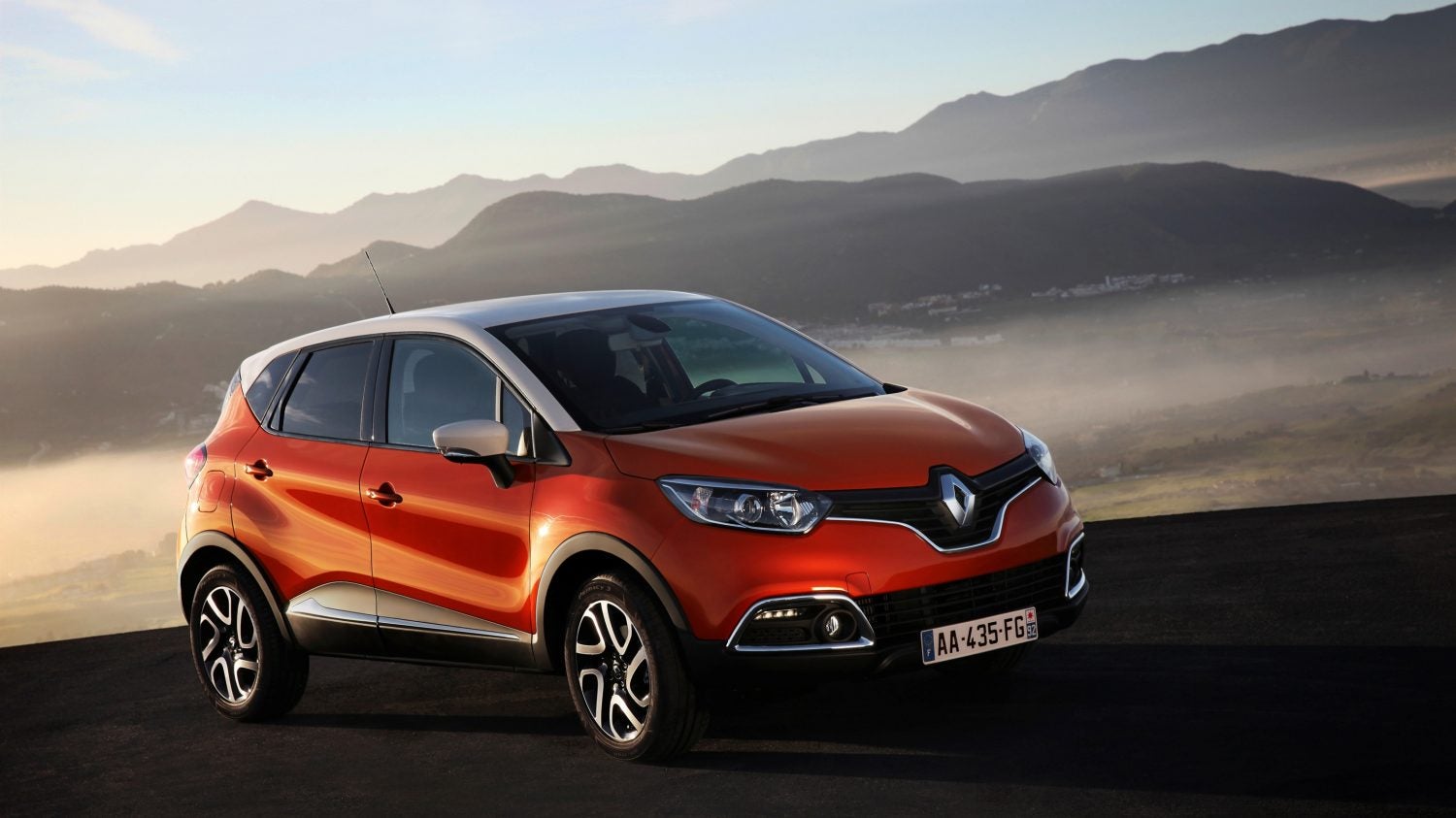
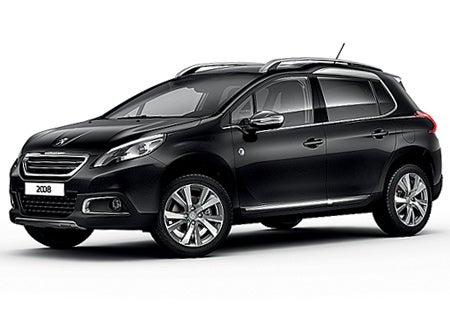
 duurtlang
> Twingo Tamer - About to descend into project car hell.
duurtlang
> Twingo Tamer - About to descend into project car hell.
08/14/2015 at 05:50 |
|
Certainly, but not on the same scale.
Ugh, I really hate those things. Inferior in every way as similar priced not-tall vehicles from the same manufacturer, from my perspective. It appears the average pensioner has a different perspective though.
 Twingo Tamer - About to descend into project car hell.
> duurtlang
Twingo Tamer - About to descend into project car hell.
> duurtlang
08/14/2015 at 05:57 |
|
Yeah true.
While I was waiting for my Twingo to get an MOT I had a look around a Kaptur at the dealer. I got in and thought ďhmm this is pretty tight Iíll move the seat backĒ it was all the way back. Iím 5Ē9. These are not practical cars, bearing in mind I was perfectly comfortable in the Sandero, Clio and new Twingo.
 Sam
> ADabOfOppo; Gone Plaid (Instructables Can Be Confusable)
Sam
> ADabOfOppo; Gone Plaid (Instructables Can Be Confusable)
08/14/2015 at 06:07 |
|
And Toyota has sold over 10 million Camrys. Which isnít really an influential car at all, to be honest.
 Svend
> Berang
Svend
> Berang
08/14/2015 at 06:17 |
|
In a way yes in that it was a lot cost to manufacture vehicle to get the masses moving but also in a way no as it was pretty much the only car that was available under the Soviet system.
But as I also said ďIt can also be seen as revolutionary in how it changed peopleís moods on cars, how they were used and the such varied type of customer from first world city individual to far flung third world organisationĒ.
Itís not always about the numbers but also the changes that it makes to peoples lives and thinking.
 Svend
> Berang
Svend
> Berang
08/14/2015 at 06:23 |
|
ďAs well, three box body styles have come back into favo(u)r and hatchbacks are not as popular as they used to be a decade or so ago.Ē
As Cť hť sin pointed out. Where we are is inundated with hatches. Your on a continent that favours big trucks, saloons (sedans), petrol (gasoline) and automatics. This side of the pond is small cars, hatches, diesel and manuals.
 Berang
> Svend
Berang
> Svend
08/14/2015 at 06:56 |
|
I donít know that the mini really changed peopleís minds that much. In continental Europe front drive and smaller cars were already pretty well accepted. So it definitely had an effect on British minds and industry, but not so much the rest of Europe. If anything it was just sort of a better Lloyd Alexander.
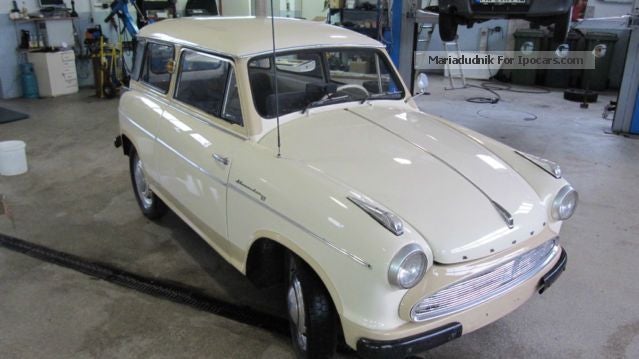
What if the Lloyd were a little more space efficient? What if it handled better? What if the engine was a little more powerful? These were selling well enough that they caught the attention of the Japanese, so Iím sure Issigonis was well aware of their advantages and shortcomings too.
 MultiplaOrgasms
> Berang
MultiplaOrgasms
> Berang
08/14/2015 at 07:19 |
|
Thank you.
 MultiplaOrgasms
> Berang
MultiplaOrgasms
> Berang
08/14/2015 at 07:23 |
|
Otherwise known as everywhere NOT in north america.
 MultiplaOrgasms
> Twingo Tamer - About to descend into project car hell.
MultiplaOrgasms
> Twingo Tamer - About to descend into project car hell.
08/14/2015 at 07:23 |
|
I once crashed into one of those Peugeots.
 Twingo Tamer - About to descend into project car hell.
> MultiplaOrgasms
Twingo Tamer - About to descend into project car hell.
> MultiplaOrgasms
08/14/2015 at 07:46 |
|
How?
 MultiplaOrgasms
> Twingo Tamer - About to descend into project car hell.
MultiplaOrgasms
> Twingo Tamer - About to descend into project car hell.
08/14/2015 at 08:09 |
|
Was late for school, did about 20mph on my bicycle, like ten meters in front of me some dude in a 2008 turned onto a driveway, you can guess what happened next.
 Twingo Tamer - About to descend into project car hell.
> MultiplaOrgasms
Twingo Tamer - About to descend into project car hell.
> MultiplaOrgasms
08/14/2015 at 08:49 |
|
That sounds painful... I got hit by a car on my bike once and it pretty much sucked.
 ADabOfOppo; Gone Plaid (Instructables Can Be Confusable)
> Berang
ADabOfOppo; Gone Plaid (Instructables Can Be Confusable)
> Berang
08/14/2015 at 08:50 |
|
By that logic the Model T wasnít revolutionary either.
 ADabOfOppo; Gone Plaid (Instructables Can Be Confusable)
> Sam
ADabOfOppo; Gone Plaid (Instructables Can Be Confusable)
> Sam
08/14/2015 at 08:55 |
|
Actually it is. Everyone else wants to copy the sales success of the Camry. And the Corolla.
Neither take big risks or push the boundaries of what is possible, but both have a huge impact on the automotive landscape.
 MultiplaOrgasms
> Twingo Tamer - About to descend into project car hell.
MultiplaOrgasms
> Twingo Tamer - About to descend into project car hell.
08/14/2015 at 08:59 |
|
I came off totally unscathed, thing is my teacher was also late that day which meant I couldnít use the incident as a totally legit excuse to get some hugs from the ladies.
 RamblinRover Luxury-Yacht
> Berang
RamblinRover Luxury-Yacht
> Berang
08/14/2015 at 09:00 |
|
using sliding windows instead of windows that lowered down into the doors - giving more elbow room and space to store things inside of the door itself?
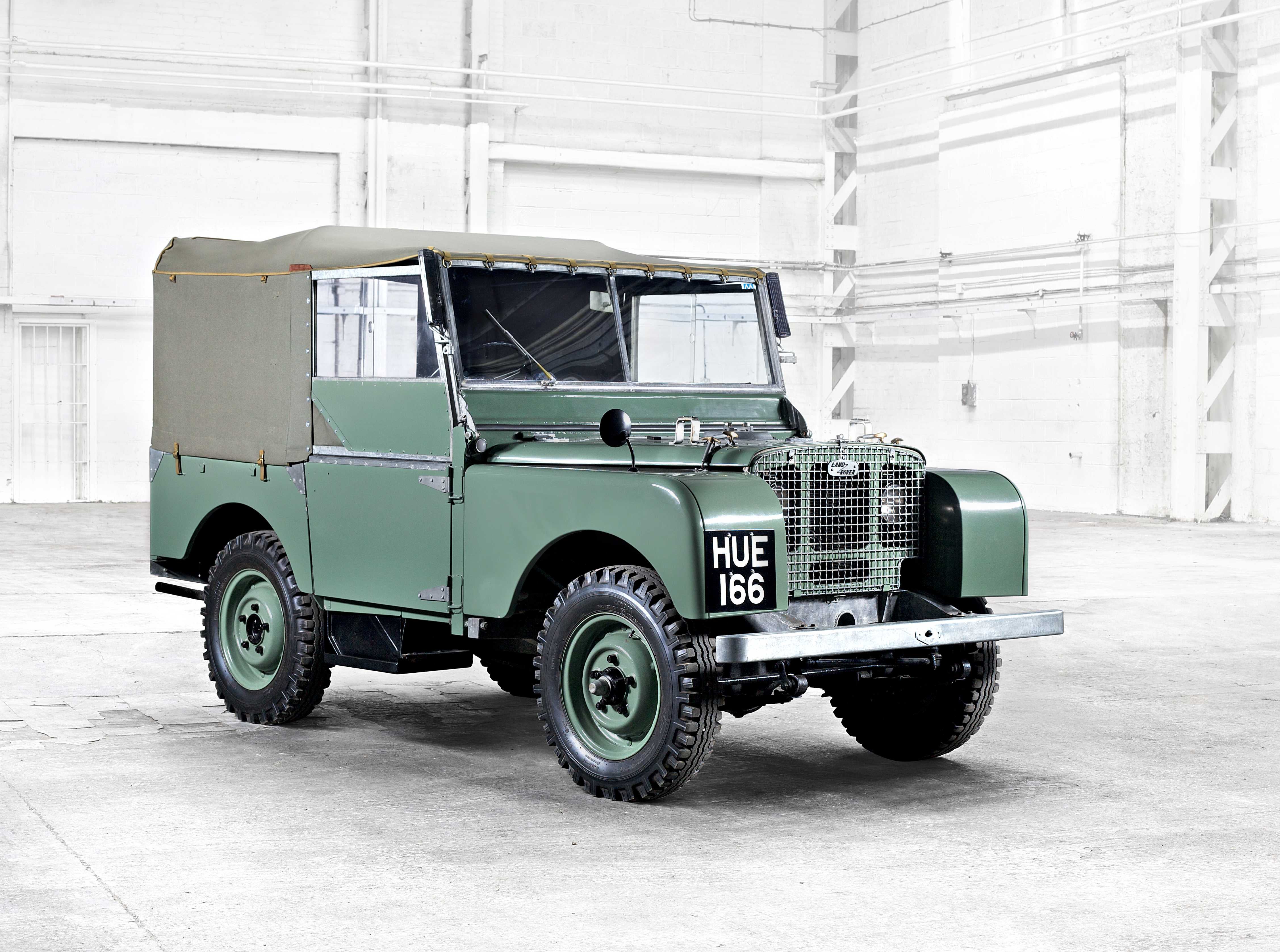
^Beat to production by the 4CV by a year (Ď48), but also an early example of sliding windows, and English too. An extra reason for them other than space is being able to disassemble the doors. Sliding windows stayed in use with Rovers until Ď84.
 Berang
> ADabOfOppo; Gone Plaid (Instructables Can Be Confusable)
Berang
> ADabOfOppo; Gone Plaid (Instructables Can Be Confusable)
08/14/2015 at 09:03 |
|
As a design the Model T wasnít revolutionary. In fact it became outdated even faster than the Mini did. What was revolutionary about the Model T was how it was produced, marketed, priced, sold - almost everything surrounding it started a revolution of some sort. The car itself though was fairly quaint even by the time the design was only a few years old. Nobody copied the Model Tís design, thereís wasnít much to copy there.
 Berang
> RamblinRover Luxury-Yacht
Berang
> RamblinRover Luxury-Yacht
08/14/2015 at 09:12 |
|
Crosley used sliding windows to cut costs way back in the 30s - but the doors were flat and featureless inside. The 4cv though had a lot of storage space in there!
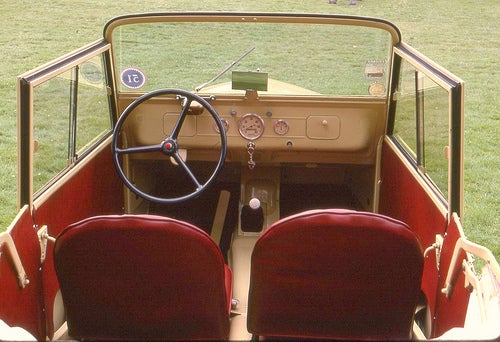
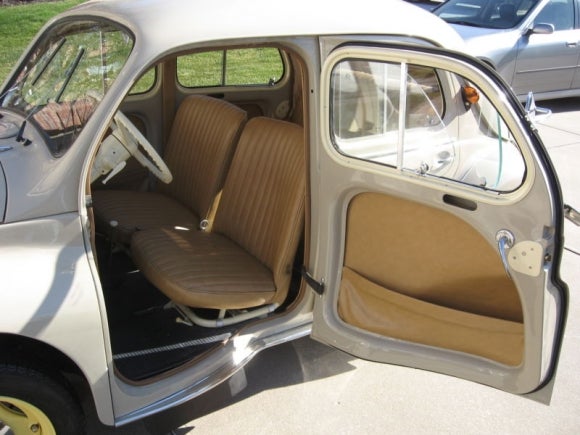
 ADabOfOppo; Gone Plaid (Instructables Can Be Confusable)
> Berang
ADabOfOppo; Gone Plaid (Instructables Can Be Confusable)
> Berang
08/14/2015 at 09:30 |
|
So which is it then? You are arguing that the Mini isnít revolutionary, but from a design standpoint is it; it very successfully incorporated many different elements into an attractive and affordable package. Just like the Model T is not a revolutionary design, but was a revolutionary manufacturing process.
A thing can still be considered revolutionary even if everything about it is not.
 jariten1781
> Berang
jariten1781
> Berang
08/14/2015 at 09:33 |
|
Revolutionary isnít the first to do something, itís the first to do something well enough that it causes a step-function change to the market or public opinion. Personally, Iíve never thought of the Mini as Ďrevolutionaryí, but I wouldnít call the folks who argue that it is wrong
.
 RamblinRover Luxury-Yacht
> Berang
RamblinRover Luxury-Yacht
> Berang
08/14/2015 at 09:54 |
|
The Rover doors gained storage pockets only with Station Wagon trim on the Series II - thereís only so much you can do with 2Ē of expanded beltline.
 boxrocket
> Berang
boxrocket
> Berang
08/14/2015 at 10:49 |
|
So the Mini is a mid-to-late-century equivalent of the Model T and VW Beetle: Good packaging, blended together a lot of other ideas in an reasonably-affordable single model, and kept making the same model with minimal changes for decades, but otherwise not overly special. Put another way, itís an automotive apple iphonie (and computers) but without the ďapple taxĒ, that is, the same barely-acceptable appliance for the masses that is mostly the same year after year, remembered for being the ďfirstĒ of many things it didnít actually do first, and mostly unchanged because why bother?
 Berang
> ADabOfOppo; Gone Plaid (Instructables Can Be Confusable)
Berang
> ADabOfOppo; Gone Plaid (Instructables Can Be Confusable)
08/14/2015 at 19:09 |
|
A revolutionary car signals a major change, it comes in with something new that others then have to adopt to keep up. The Mini didnít do that. It was a major change for BMC, but it didnít really make big waves elsewhere.
The model T came in with true mass production, enough to bring economies of scale into play to create a car cheap enough for average workers to afford.
The Traction Avant came in with front wheel drive, style, and unitbody construction - and soon it had all sorts of imitators, Adlers, DKWs, etc.
The beetle was not so much revolutionary as it was just the right car at the right time, sturdy, reliable, relatively cheap, and available. It didnít really ever have any direct competition or imitators, although lots of cars crowded the same size/price range eventually. If might be revolutionary in a very tangential way in that lots of companies looked at it and tried to figure out why it was selling so well - but as a car, although rather novel in design it was not a revolution.
The Mini was a smart design that had enough space, enough power, enough style, and good handling. It too was the right design at the right time. But it had little influence overall on other cars outside of BL. Possibly because BMC was wanting a car to outdo the microcars - which though very popular in the 1950s were already on their way out by the early 1960s. When those cars disappeared the Mini was more than able to fill that gap in the market, and then some. But the market was expanding elsewhere and the mini ultimately was too small to keep up.
It did for example fight off the Honda N600, but it couldnít fight off the Honda Civic. Or all the other somewhat larger compacts that appeared in the 1970s. And so far as I know, outside of England the only company that adopted the engine on top of the transmission layout was Peugeot. VW, Honda, Toyota, Nissan, Renault (eventually) all took up the Fiat layout of the engine sitting side by side with the transmission and using unequal length driveshafts.
 Berang
> boxrocket
Berang
> boxrocket
08/14/2015 at 19:16 |
|
I think it was a really very good car when it came out. It just wasnít as far ahead of the game as imagined to keep up. And since BMC, BL, Rover etc. had such bad management and just bad luck too, they never replaced and axed it like the wanted to. And I guess as long as people kept buying it, why not keep selling it?
 Berang
> Flavien Vidal
Berang
> Flavien Vidal
08/14/2015 at 19:23 |
|
The Japanese also liked the Fiat 126 a lot when it was current. Although the Mini is the better car - I think thereís a lot to be said about the snob appeal of an import.
But when it comes to influence it is interesting that Japanís front wheel drive cars were not copied from the Mini. Suzukis were directly descended from Lloyds. Subarus were inspired by Goliath. Honda ? Although Hondas were called poor manís minis, technologically theyíre closer to the Suzukis and Lloyds than to the Mini. Datsun adopted the Fiat 128 layout, as did later water cooled Hondas. Toyota had studied the 2cv, but in the end did not build a front wheel drive car until the late 70s, and it was more along the lines of Audi and Saab - and then they switched to the Fiat 128 type layout.
 boxrocket
> Berang
boxrocket
> Berang
08/14/2015 at 21:21 |
|
Same could be said for the Model T and Beetle.
 Berang
> boxrocket
Berang
> boxrocket
08/14/2015 at 23:57 |
|
I donít think the beetle was ever cutting edge. Yeah it had a lot of novel features, some of which were practical. But aside from moving under its own power reliably - it wasnít that remarkable. The model T is more remarkable in that it was a full featured car at a price a full featured car had never been available for before the model T. When it was new its design was cutting edge. But car technology moved very quickly during the 1920s.